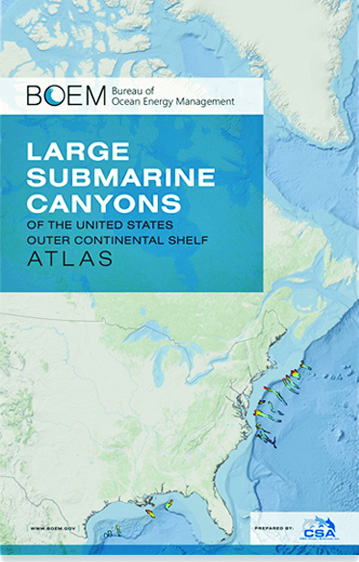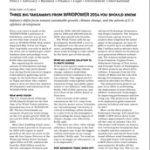CSA Ocean Sciences Inc. (CSA), a marine environmental consulting firm that specializes in multidisciplinary projects concerning potential impacts of activities in coastal and marine ecosystems, recently announced the U.S. Bureau of Ocean Energy Management (BOEM) in collaboration with CSA Ocean Sciences Inc. (CSA) has released a new atlas of the major submarine canyons within U.S. waters.
This atlas improves environmental management of the outer continental shelf (OCS) by having a single depository of maps and information on major submarine canyons of the OCS. The atlas is also intended as a resource for the public, educators, and the science community.
The atlas was designed to present a consistent way to define canyon boundaries, provide large scale bathymetry for each included canyon, note protected areas, and include notable facts for each canyon.

Submarine canyons in federal waters were inventoried, delineated, described, and categorized using a methodology consistent with terrestrial watershed mapping. A criteria-based algorithm generated spatial canyon polygons from which slope, length, and depth were calculated.
After conducting a literature review and using existing published information and data, a synopsis of the history, known archaeological sites, anthropogenic impacts, alternate names, geography, size, geology, biology, water quality, currents, and any official designation of each canyon was generated.
As a result, CSA was able to provide BOEM with a single depository of maps and supplemental information on United States OCS submarine canyons to inform both long-term and near-term analyses.
“This project was an exciting collaboration among the CSA and BOEM scientists,” said Dr. Mark Fonseca, CSA’s vice president–science. “We worked together to develop a defensible and repeatable process through the application of methods developed in other ecosystems. This has already been applied to begin explaining marine mammal fidelity to canyon ecosystems.”
More info espis.boem.gov




































